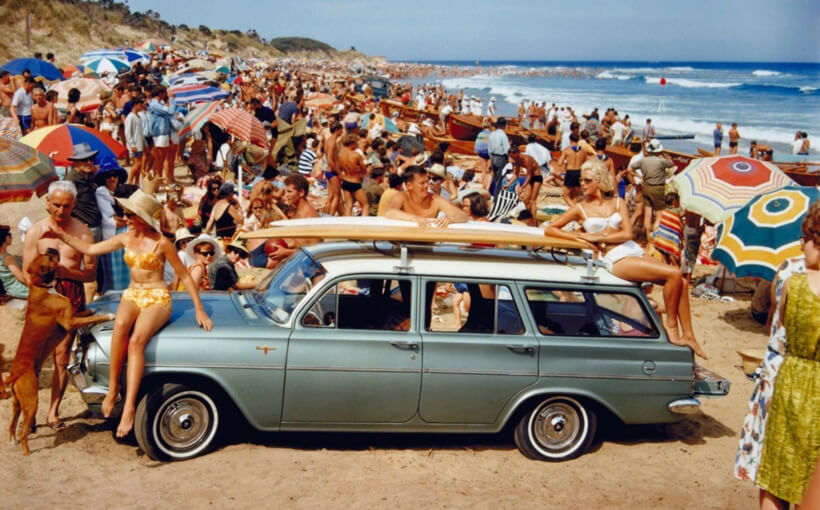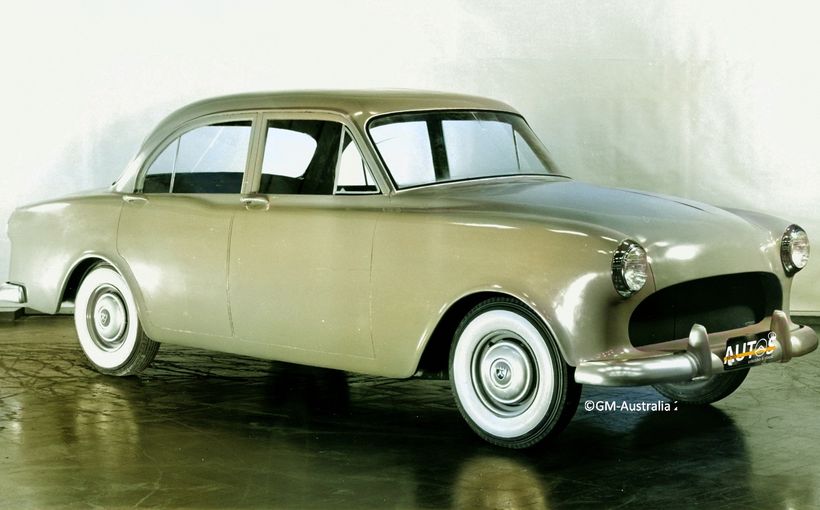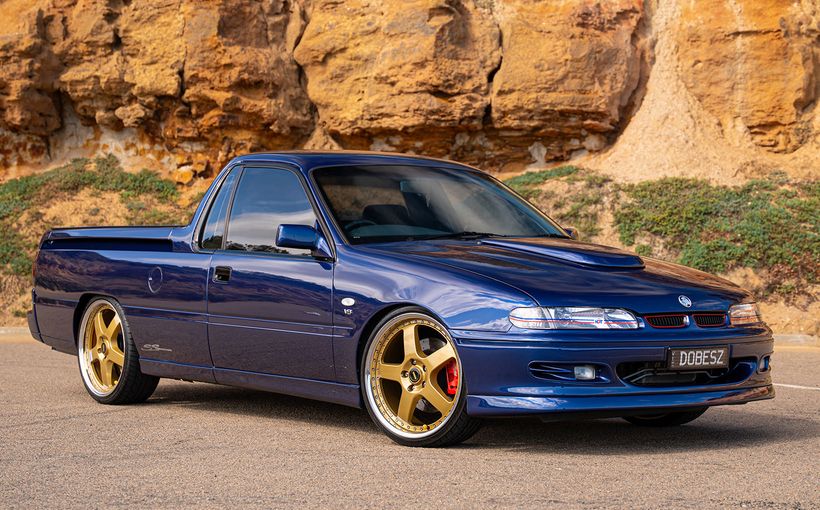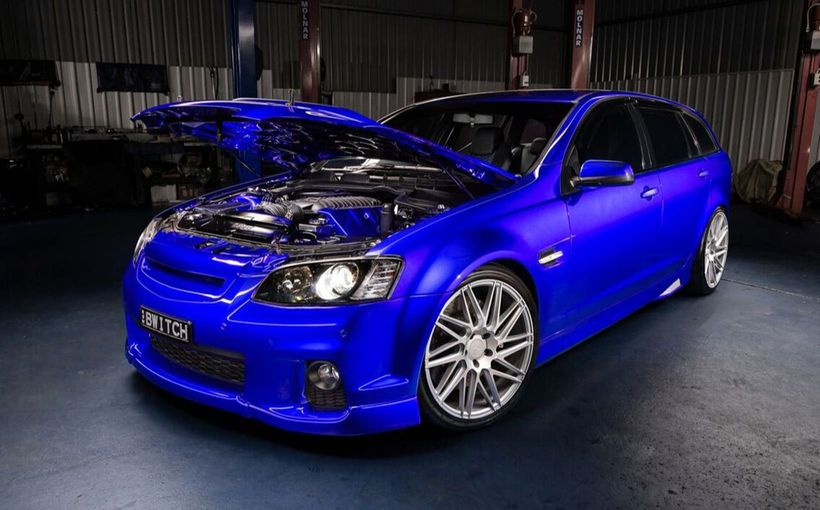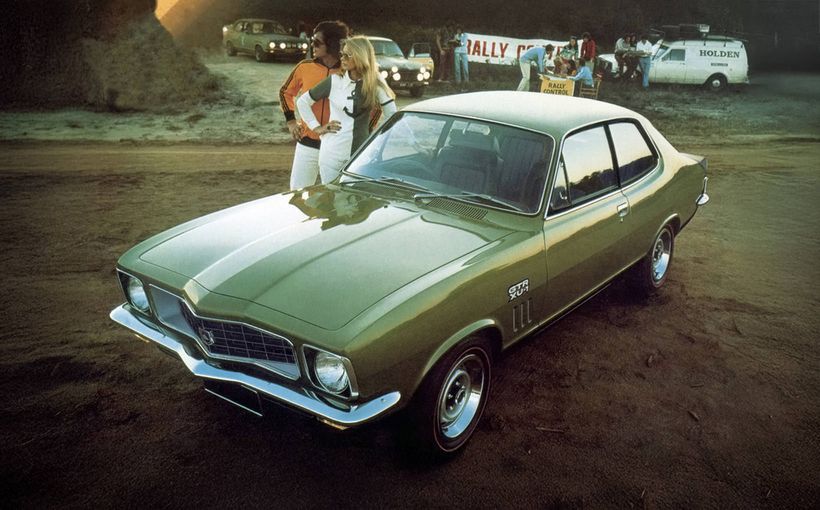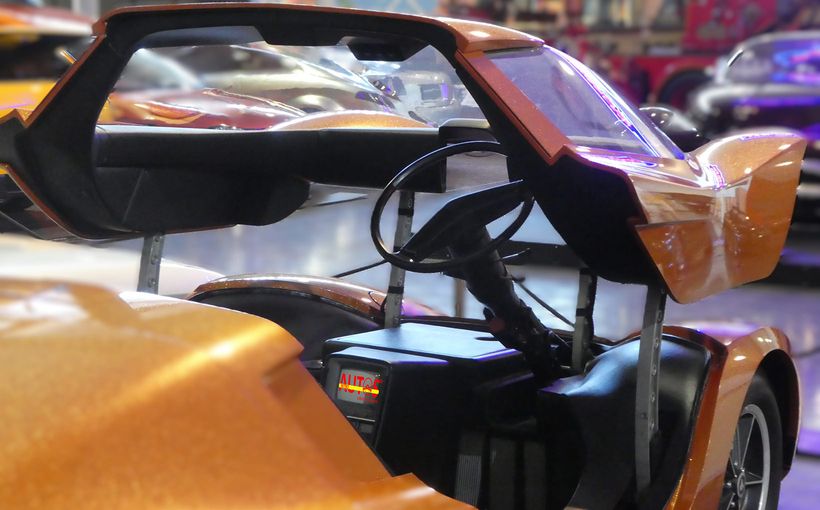
From the announcement of the 48-215 ‘FX’ right through until 1971 and the HQ, a new model Holden was front page news in Australia. GM-H’s own advertising slogan ‘Australia’s Own Car’ was taken up by the public and applied with little, if any, irony. While all new Holdens were of interest, a new shape really got the public’s attention. Between 1948 and 1978, when the Commodore effectively replaced the Special/Kingswood/Premier as the mainstream volume-selling Holden, there were four entirely new shapes – the FE in 1956, the EJ in 1962, the HK in 1968 and the HQ.
Each of these four represented a significant step forward in design but in my view the FE, EJ and HQ were the three most important. (The HK was a confused exercise, having had an additional four inches of sheetmetal added between the leading edge of the front door and the guard when Holden designers learnt about the forthcoming XR Falcon’s dimensions!)
Obviously the FE was keenly anticipated as the first truly postwar Holden design, meaning a three-box design without the essentially pre-war bulging mudguards which made the 48-215 and FJ look dreadfully dated by about 1952. The HQ has become established in fairly recent times as a standout classic. These two were probably the freshest of all General Motors’ cars in their respective periods.

Melbourne High School must have seemed like the perfect backdrop for the newly launched EJ Premier. It was 1962, remember.
Through all this the EJ tends to be overshadowed and is always seen as an also-ran behind its EH successor. ‘Where were you in ’62?’ asked the poster for the great 1973 movie American Graffiti. One place I was one Sunday morning was admiring the first EJ Special I’d seen outside a house in one of Melbourne’s then outer suburbs: how new and modern it looked; even my conservative Armstrong-Siddeley-driving English father was impressed. The release of the first Holden Premier counts among my major automotive memories of 1962. Others include the Zephyr Mark III, the Aussie Compact Fairlane and the introduction of the Mark X Jaguar locally – a great year indeed!
About eighteen months earlier, on the cusp of 11, I had bought the April 1961 edition of Modern Motor magazine and thrilled to the scoop photograph of a murky yellow-green car shot at some distance and travelling at speed (at the Lang Lang proving ground). ‘Here’s the NEW HOLDEN, Another World Scoop’ proclaimed the headline.

Weeks after that magazine went on sale, the man who designed the 1959 Car of the Year ‘Wide-Track’ Pontiac, Joe Schemansky, accompanied by colleague Paul Gillan, wandered through one of the Detroit styling studios. There were numerous cars there, Schemansky told me when I interviewed him more than two decades later for Wheels, but one stood out. ‘Even without lifting the cover I could see there was something very odd about it. I lifted the cover and correctly guessed that the car was a Holden. (Perhaps he was able to make this guess because he’d already seen the magazine?) “This is awful,” I said to Paul. “Bill Mitchell ought to see this.”’
Thus begins the story of why the EJ Holden, introduced in the last week of July 1962, looks quite different – especially at the front – from the vehicle shown on that April 1961 cover. The Americans made some quick changes to the car designed by Alf Payze and his small team at Fishermans Bend. The EJ Holden received the 1961 Chevy treatment. In profile it already conformed. Payze had taken the 1962 Opel Kapitän as his starting point.

1962 Opel Kapitän
Peter Nankervis, who was heavily involved in the HK Monaro among many other important Holden design programs, put it this way: ‘They picked the bumpers up, put valances underneath, made a clean radiator grille with a “forehead” and gave it a reverse angle grille with very fine blades.’
Don Loffler’s fifth book, Holden Snapshots: Images from the Golden Years (2015) includes images of EJ prototypes that answer questions I’ve pondered for years. Payze himself said that he used the proposed 1962 Opel Kapitän as his starting point but the murky yellow prototype gives no hint of that car, not that we see more than the grille, front left wheel and mudguard.

There are still hints of the FB/EK grill treatment in this (hideous, isn’t it?) 1957 prototype.
Loffler's book includes a quartet of shots of a November 1957 prototype with the Victorian registration GMX 105. It is this car that closely resembles the Opel. There are four headlights – the height of 1957 modernity! – above an ornate and inelegant grille. This early EJ prototype and the production Kapitän retain the FB/EK dogleg A-pillar. Unique to Payze’s early design is a rear fin which starts in the middle of the front door and rises gradually.
Then in March 1960 shots were taken of an EJ utility and van looking very much like the production models except for the toothy grille per that infamous Modern Motor cover. The final Payze variant is dated July 1961, by which time it seems Mitchell and his team had already begun to make their changes. This car, interestingly, is badged ‘Super Special’, so the Premier name was still in the future. Front and rear aside, the only big differences between this model and the production car are a more emphatic rear waistline and the shape of the side chrome moulding – it hooks downwards where the leading edge of the rear guard kicks up and then straightens up to run back to the taillight.

The switch from ‘Super Special’ to ‘Premier’ seems to have occurred late in the process. Credit goes to early Holden historian Don Loffler for superb sleuthing!
As well as looking more modern, the EJ also handled better than any of its predecessors. It was two inches lower and an inch wider than the EK. The wheelbase was unchanged but the EJ was four inches shorter which contributed to the driver’s sense that this was a less unwieldy, more responsive car. Braking was also much improved, thanks to a new duo-servo system which gave shorter stopping distances with reduced pedal effort.
The most disappointing thing about the EJ was that it used the same grey-painted engine as its predecessors with maximum power rated at just 75 brake horsepower. For the 48-215 and FJ models the figure had been 60, rising to 70 with FE and 75 with FB. This did not matter so much for the variants that came to market with a revised three-speed manual transmission but when the ancient grey engine was saddled with automatic transmission, performance was poor.
Thus it was that the undoubted highlight of the EJ range was not as high as it should have been. The Premier was available only as an automatic sedan. This otherwise rather wonderful car with all its desirable extra features was the poorest performer and probably could not have matched any previous Holden sedan or wagon in a sprint from zero to 60 miles per hour. This now seems nothing short of weird. In hindsight GMH’s product planning of the 1962 Holden EJ Premier’s mechanicals seems even more conservative now than it did at the time. Imagine not offering this significantly heavier variant with manual transmission. It gives a clear insight into GM-H priorities of the time with high performance not among them.
Contrast the Premier with the original 48-215 Holden sedan. That car offered 60 brake horsepower and weighed 2200 lb. The better part of a decade and a half on, the EJ Premier had 75 brake horsepower but weighed 2639 lb. Politely (this was 1962 and journalists wore ties to work, imagine!), Wheels magazine’s tester wrote: ‘Because of its extra weight, compared with the Holden standard and special models, and its compulsory automatic gearbox, the Premier does not give a sensational performance…I could not top 80 mph, and acceleration times were just adequate, certainly not exciting.’ The 48-215 could reach 50 mph from a standing start in 12 seconds, the EJ Premier took 13.5.’ The Mark III Zephyr took. seconds 10 seconds flat.

Australia’s Own Car had hitherto been a rugged but basic device that triumphed over all rivals in the market by virtue of value and reputation and, by 1962, sheer habit. But the EJ Premier offered similar pretensions to luxury as the vaunted Mercedes-Benz 220 SE, in fact arguably higher pretensions because the interior boasted Howe cowhide, supple to the touch and aromatic. And, of course, the front seats were buckets, which had given rise to rumours in the supplier industry that GMH was set to launch a sports car.
Nobody expected the Holden Premier; nobody had even expected the Super Special, a name later to be associated with an overloaded pizza. If anything, the press advertisements risked underselling it. Remarkably, they failed to say that to buy even equal luxury in an imported car, more than twice the funds would have been needed and, furthermore, that any such car would not handle Australian conditions as well as a Holden.

Did this prove that Holden’s product planners did not grasp what automotive luxury entailed? By the time the first Premier was conceived, even such conservative English manufacturers as Armstrong-Siddeley, Daimler and Rover had either understood – or were about to realise, the year being 1957 or 1958 – that respectable, if not outstanding, performance was a critical ingredient in the luxury car recipe. Fortunately for these executives, none of this mattered in 1962, or didn’t matter much, or to many Holden customers.
Interestingly, in the same week Ford Australia launched its XL Falcon range which included a ‘luxury’ Futura variant. The Falcon already had an optional ‘Pursuit’ engine with 101 brake horsepower, 11 more than the standard unit. Futura buyers could choose any combination: small-engined manual, small-engined auto, Pursuit manual or Pursuit auto.

It’s a sign of more casual times: these days those slight rust marks would be removed before a press image was shot.
Of course the new ‘red’ engines – set to make their debut in the EH the following spring –were still in the final stages of development in July 1962 but it does seem strange that no effort was made to maximise the performance of the ‘grey’ (‘the old grey mare, she ain’t what she used to be’) engine for this application. After all, by the mid-1950s the reality of 100 mph Holden hotrods had arrived.
As for the idea of producing a more prestigious version of a mainstream sedan, this was not new. Ford was arguably first with the Zephyr Zodiac in the European autumn of 1953. Essentially, Holden aped the Zodiac specification (two-tone paint, leather, gold badging, whitewall tyres) except for one of the main elements. Ford’s engineers had raised the engine’s compression ratio from 6.8:1 to 7.5 for an increase of three brake horsepower. Yes, you could argue that this was more symbolic than anything else but Holden could easily have chosen this path. A modified cylinder head was all that would have been needed. And could it really have been that difficult to develop and all-synchromesh version of the manual gearbox just for the Premier?

Aren’t they superbly staged these typically period images? No-one would guess that this is a set-up shot!
To me, it all smacks of complacency. The probability is that Holden’s product planners decided that an up-spec version of the new shape Holden would satisfy the demands of an increasingly affluent car-buying market and help add interest to the EJ until the new engines were ready. (There was certainly interest when rumours circulated from suppliers about bucket seats ordered by GM-H: what punters predicted was not a Holden luxury model but a sports car!) Notwithstanding its mediocre performance, the Premier sold strongly. But some might have lost a chunk of their enthusiasm when the altogether more macho EH Premier arrived a year later.
Not only did Bill Mitchell order a rework of Payze’s EJ, but without (it seems) any consultation, he decided to reclaim Holden for his Detroit designers. Both the EH facelift and the all-new HD were done in Detroit and arrived at Fishermans Bend in boxes. GM-H would get its new Technical Centre but the first Director of Design Staff would be Joe Schemansky. (His successor would be Leo Pruneau. Bill Mitchell transferred Pruneau and Don Lasky to the International Styling studio before the end of 1961 and they were charged with developing the 1964 Opel Kapitän/Admiral/Diplomat and then the HD Holden.)
Although the faster and – to most people – more attractive EH has overshadowed the EJ in the history of Holden, the EJ Premier remains a landmark model. The colour schemes, too, were inspirational. Metallic paint was still a novelty in 1962 Australia. Typically, an elegant colour like Wimmera Green, Theatre Grey or Euroa Gold (the colour of the millionth Holden which made its way down the Fishermans Bend line on 25 October 1962) – was used for the lower sections of the car with the roof in Atherton Ivory. Interiors also used two colours in red (Astoria and Waldorf Red), brown (Samoan Tan and Vaucluse Brown), blue (Merle and Pagoda Blue) or green (Akron and Vagabond Green).
Although the EH – launched in August 1963 – would prove to be the better car, the EJ Prem represented a kind of coming of age. Think of a high school girl preparing for her first dance. The EJ was easily the prettiest Holden to date; the Premier was almost beautiful. (I’ll have mine in Wimmera Green with Atherton Ivory, please.)
Despite its relatively poor performance, the EJ Premier was well targeted as a second car to affluent families in suburbs like Toorak and Vaucluse, where it joined a Mercedes-Benz, Jaguar or Rover in the double garage. No question, the EJ Premier was a great success and it was one of those cars that prove how motoring journalists sometimes just don’t understand the public’s taste.

In styling terms, the EH could hardly have been more than an anti-climax. This time around the Premier highpoint was not compromised. All Premiers – and now there was a wagon to match the sedan – got the big 179 cubic-inch ‘red’ engine as standard.

There was nothing too flash about the S4’s interior, which was identical to any other EH Special’s.
While discussing the EJ Premier, I have mentioned the Mercedes 220SE. In 1967 my then best friend’s solicitor father drove one of these cars, while his wife had an EH Prem auto. My recollection is that both cars were equally exciting but the Premier’s aromatic hide was even more special than the Merc’s vertical speedo with the moving bar that changed colours with increasing (or decreasing) velocity). Mind you, I wasn’t much interested back then in brakes and handling!

This shot comes from the EJ brochure, the Premier, obviously.
The new engines made Holdens highly competitive on performance for their price class, making up much of the ground lost to rivals, notably the Pursuit-engined Falcon, the Zephyr Mark III and, of course, the 145 horsepower Valiant. Certainly the R and S Series Chrysler Valiants had brought new urgency to the horsepower race – and the (obvious) perception was that 145 seemed a great deal better than 115 – but on the road the 179 Holden with manual tranny was every bit the Valiant’s equal, which must have disappointed many hard-driving Valiant customers.
The least powerful version was the lower compression ‘export’ 149 (cubic inches, equating to 2.4 litres), rated at 95 bhp. The standard 149 promised 100, a huge 33.33% gain over the EJ’s 75. The larger version claimed 115 bhp.
How about a forged steel crankshaft with seven main bearings as standard? There were hydraulic lifters. The dimensions were oversquare and piston speeds – at that time still considered critical as a factor in longevity – were much reduced.
The 179 engine was a cracker. How many mainstream cars can you think of that offered a horsepower increase of more than 50 per cent in one model change?
149 179
Maximum power 100 bhp @ 4400 rpm 115 @ 4000
Peak torque 145 lb/ft @ 2000 rpm 175@1600
The combination of the 179 sixpack and manual transmission gave the General his best chance yet of victory in the Armstrong 500, which moved from Philip Island to Mount Panorama the same year. Significantly, the EH S4 was created several months before the 179M was available. With its blueprinted and balanced engine, the S4 made about 130 brake horsepower. While in theory this was easily sufficient for Bathurst victory, the car was hampered by drum brakes and just three forward ratios. Second wasn’t such a bad outcome.

GM-H did not offer the manual 179 at a launch because the gearbox was seen as insufficiently strong to cope with the torque and power. The strengthened unit developed for the S4 went into production for the 179M and became standard in the Premier, transforming that model from the one-trick-pony EJ into a four model range of Sedan manual and auto and wagon manual or auto.
As for the S4 it kept its much vaunted sintered metallic brake linings, which barely worked when the drums were cold, and its bigger fuel tank as unique items. In hindsight, the S4 – immensely collectible as it has become – was too little car for the job, while the glamorous EH Premier remains one of Holden’s greatest ever cars in its own time context.
The EJ/EH Holdens offered a new sophistication and elegance to a marque that looked very much as it had lost its way with the FB and EK. There is no question either that these models were much improved by Detroit design input, while the high performance of the 179 versions restored the performance parity GM-H had squandered since FJ days.

Chevy hints in rear treatment (1957) show that Alf Payze knew that he was supposed to look to Detroit as well as Opel.

These ute and van prototypes are dated March 1960. With the (now single rather dual) headlights now alongside the grille rather than above it, the design looks more modern but perhaps even uglier – Joe Schemansky’s adjective ‘awful’ seems about right – than the somewhat baroque 1957 car.


